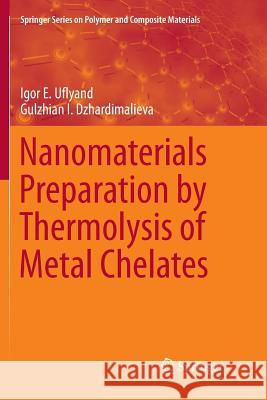Nanomaterials Preparation by Thermolysis of Metal Chelates » książka
topmenu
Nanomaterials Preparation by Thermolysis of Metal Chelates
ISBN-13: 9783030066543 / Angielski / Miękka / 2019 / 549 str.
Kategorie BISAC:
Wydawca:
Springer
Seria wydawnicza:
Język:
Angielski
ISBN-13:
9783030066543
Rok wydania:
2019
Wydanie:
Softcover Repri
Numer serii:
000904312
Ilość stron:
549
Waga:
0.78 kg
Wymiary:
23.39 x 15.6 x 2.92
Oprawa:
Miękka
Wolumenów:
01
Dodatkowe informacje:
Wydanie ilustrowane











